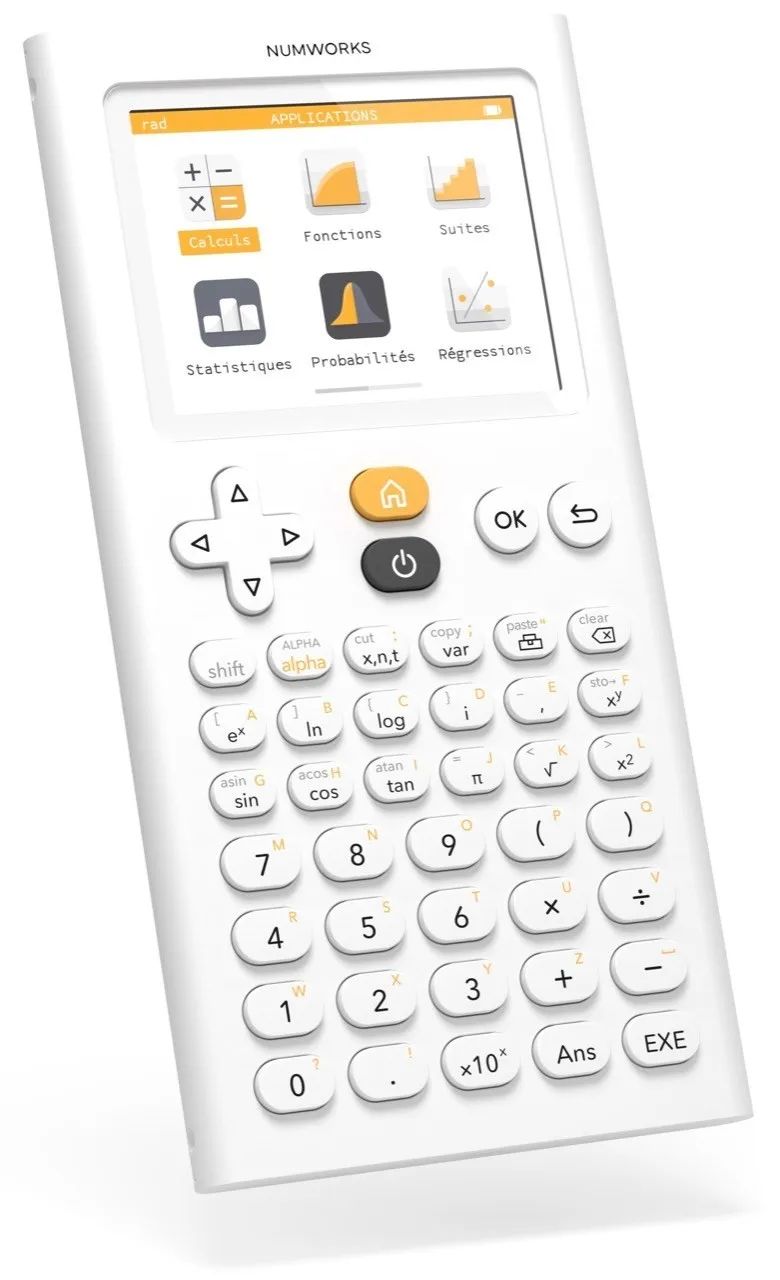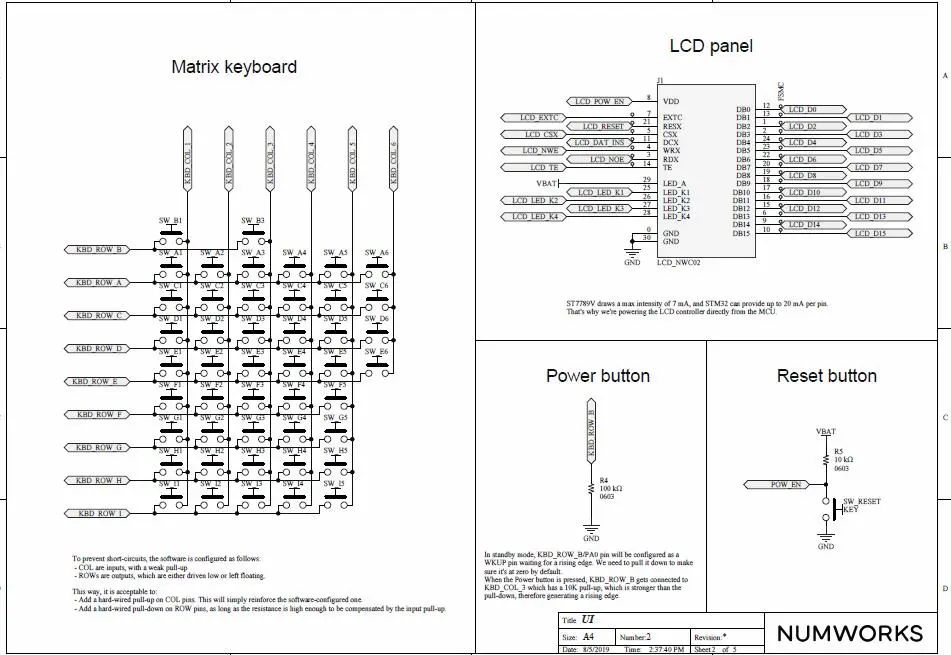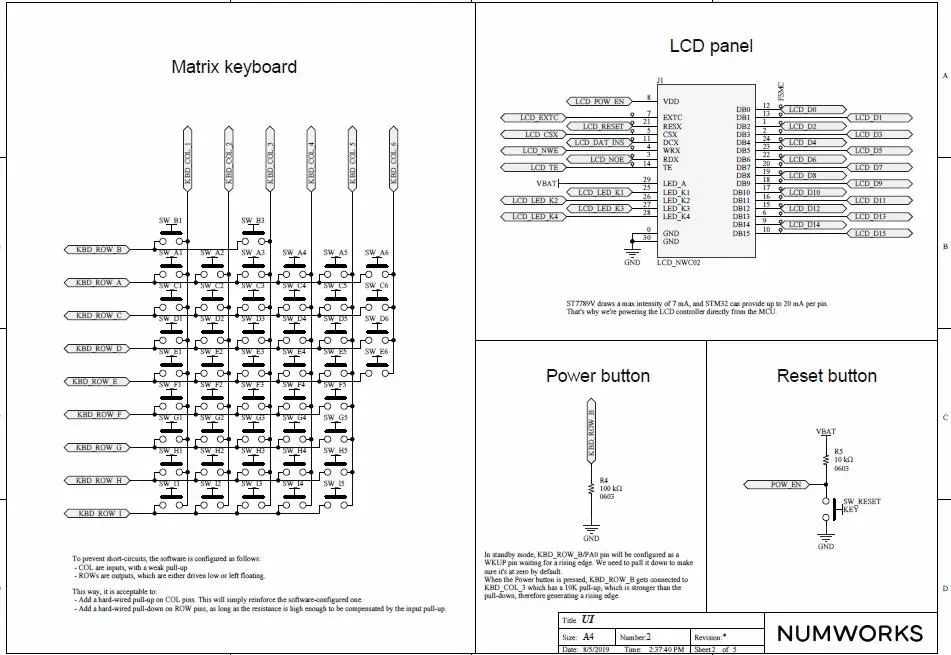The graphing calculator is a niche market, with the main players being Casio and TI (Texas Instruments). Currently, the major issues with these two giants are their lack of aesthetic appeal, slow hardware and software iterations, and relatively closed systems.
The NumWorks graphing calculator is quite impressive, offering a high level of playability, and its hardware schematics are open-source, shared for everyone!
1. Stunning Aesthetics

2. Open-Source Hardware Schematics and PCB
Download link for the schematic PDF: https://www.numworks.com/resources/engineering/hardware/electrical/schematics/schematics-90d3c22f.pdf


The processor uses ST’s STM32F730V8T6 high-frequency MCU, and the embedded software is built on a self-constructed RTOS framework.
The STM32F730V8T6 (100-pin) is the brain and heart of the calculator. This chip integrates a 216 MHz ARM Cortex-M7 core and 256K of static RAM.
The Nor Flash AT25SF641 chip stores 64 Mbit of data and provides service via a 104 MHz Quad-SPI bus.
The LCD module integrates the ST7789V LCD controller, which receives bitmap data from the MCU and drives the pixel matrix accordingly. This LCD controller has an integrated SRAM frame buffer and drives via a 16-bit wide bus.
The lithium polymer battery is charged via USB. The USB charging management chip RT9526A draws current from the USB port and uses the CC-CV (Constant Current, Constant Voltage) charging curve to charge the lithium battery.
Additionally, there are design highlights such as a matrix keyboard, USB surge protection, and three LED indicators!

PCB link: https://www.numworks.com/resources/engineering/hardware/electrical/pcb/
3. Flexible and Highly Playable Software
GitHub address: https://github.com/numworks
Supports the Epsilon high-performance graphing calculator operating system.
https://www.numworks.com/resources/engineering/software/
Epsilon can be compiled into a standalone application and simulated on a PC.
The software simulator can be found here: https://www.numworks.com/simulator/
Supported applications are as follows:

Follow the public account “Embedded Talks” to learn more about interesting embedded projects.
Recommended reading: